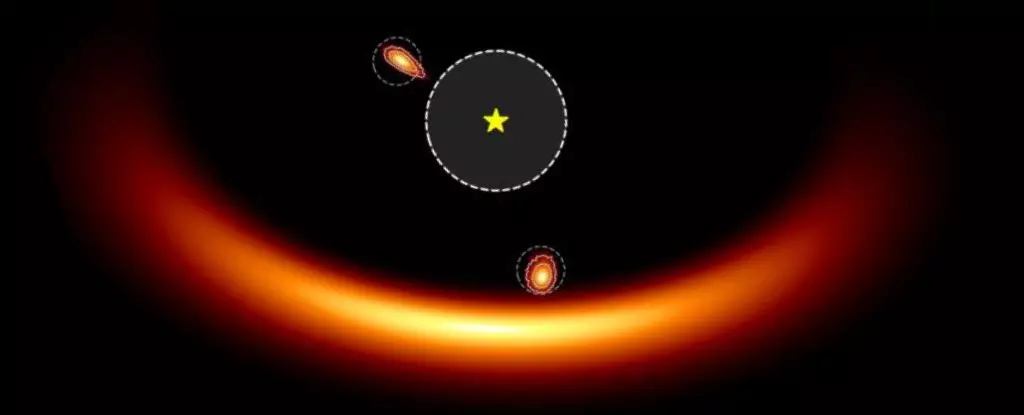The universe is a spectacle of complexity, particularly in the realm of stellar evolution and planet formation. Understanding how planets come into being is essential not only for unraveling the mysteries of our own Solar System but also for comprehending the broader mechanics of planetary systems throughout the cosmos. Recent advancements using the James Webb Space Telescope (JWST) have propelled astronomers closer to this understanding, especially through the examination of the star system PDS 70, which is situated approximately 370 light-years away from Earth.
PDS 70 is an exemplar of a T-Tauri star still in its formative phase, estimated to be around just 5.4 million years old. T-Tauri stars are crucial to the study of stellar and planetary development because they are characterized by the presence of a substantial disk of gas and dust—materials necessary for forming planets. Notably, this system harbors two young planets, designated PDS 70b and PDS 70c, which have garnered the attention of scientists due to their unique properties. Most remarkably, PDS 70b has the honor of being the very first protoplanet ever captured in direct imaging, a milestone achieved by the European Southern Observatory’s Very Large Telescope (VLT) in 2018.
The properties of PDS 70 and its planetary companions present a unique opportunity: for researchers to observe the active processes of planet formation. This is akin to having a front-row seat to a cosmic event that reflects the formative years of our own Solar System. Observations made by the VLT using its SPHERE instrument provided a foundation for further investigation, detailing the atmospheres, masses, and thermal characteristics of these burgeoning planets.
The JWST represents a leap in observational technology, enabling astronomers to probe the universe in ways previously unimaginable. It employs a technique called Aperture Masking Interferometry (AMI) via its Near Infrared Imager and Slitless Spectrograph (NIRISS). This innovative approach increases the effective resolution of the observations, allowing for more detailed images of celestial objects. Recent research conducted by a team led by graduate student Dori Blakely has expanded our knowledge of the PDS 70 system, revealing the presence of potential circumplanetary disks around PDS 70b and PDS 70c.
Data collected from the JWST suggests that these protoplanets are still in the process of gathering material, thereby transforming our understanding of how planets accumulate mass during their developmental stages. This observation is pivotal, as it gives scientists insight into the processes that govern the growth of planetary bodies. Blakely’s analysis indicates the detection of warm material around the planets, hypothesized to result from accretion disks feeding them matter.
The intricate dance of matter around PDS 70 and its planets showcases the fundamental processes of planetary formation. The circumplanetary disks around PDS 70b and PDS 70c act as reservoirs from which these bodies can draw material. This is analogous to how the Earth and other planets in our Solar System formed by accumulating smaller bodies over time.
In addition to studying PDS 70b and PDS 70c, researchers are also intrigued by the possibility of a third planet, PDS 70d. Prior studies hinted at its existence, though its nature remained uncertain. The new data from JWST has narrowed down the parameters for this potentially elusive body, which, if confirmed, could present a markedly different atmospheric composition compared to its siblings. This possibility adds another layer of complexity to our understanding of planetary systems, as it opens up questions about the diversity of planetary characteristics and formation scenarios.
The ongoing research into PDS 70 not only sheds light on our own Solar System but also contributes to the broader academic dialogue surrounding exoplanets and their formation. The insights gleaned from this system are invaluable; they present a unique snapshot of planetary development at a stage that is rarely observable.
Ultimately, the work surrounding PDS 70 encourages scientists to continue exploring the enigmatic world of planet formation, with each piece of data contributing to an ever-expanding puzzle. As technology like the JWST propels our capabilities forward, we inch closer to answering long-standing questions about the genesis of planets and the intricate systems that arise around new stars. Observing the birth of planets like those in PDS 70 offers not just scientific knowledge but also deepens our appreciation for the fundamental processes that shape our universe.

